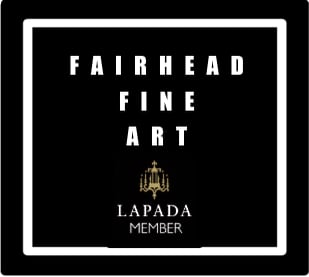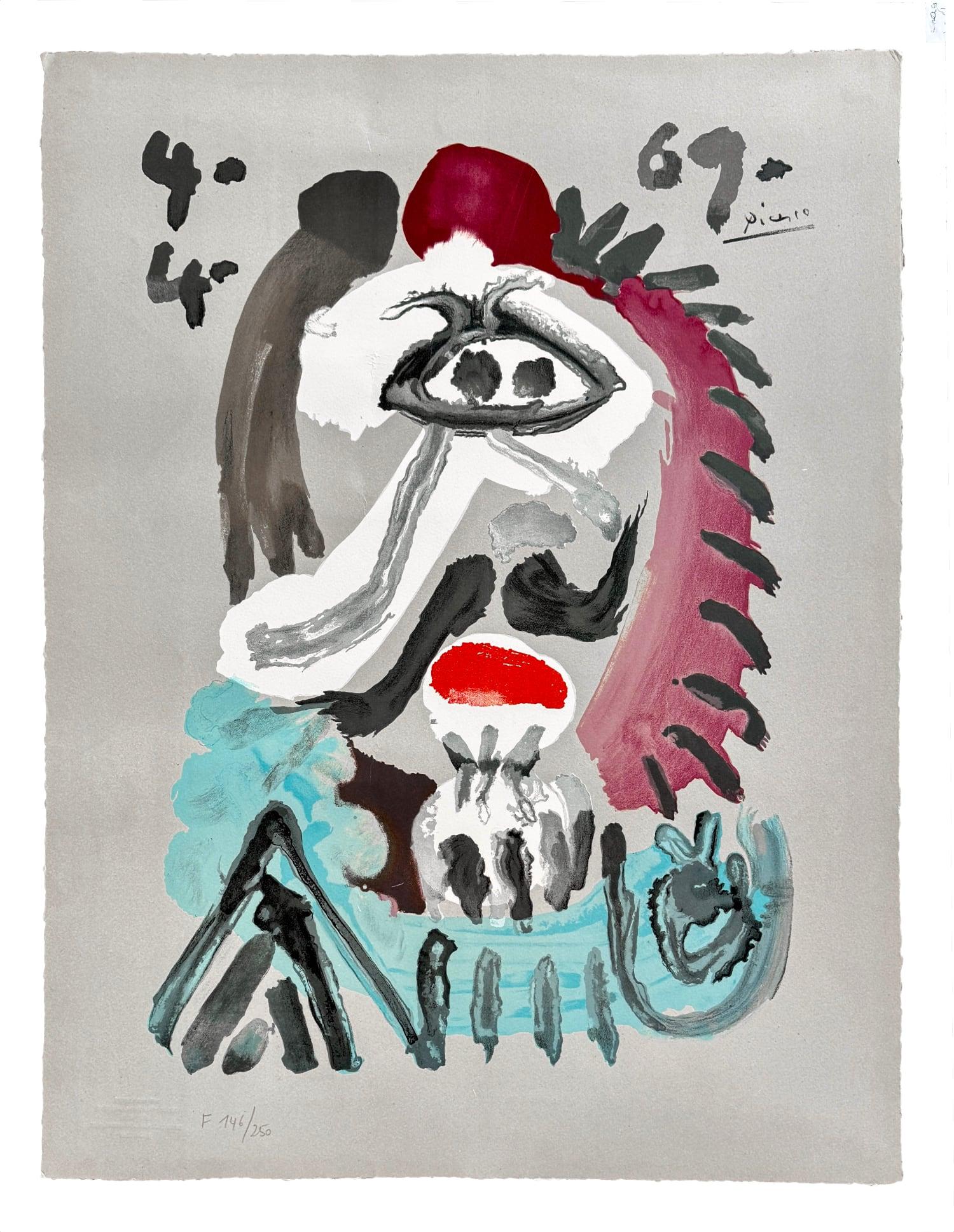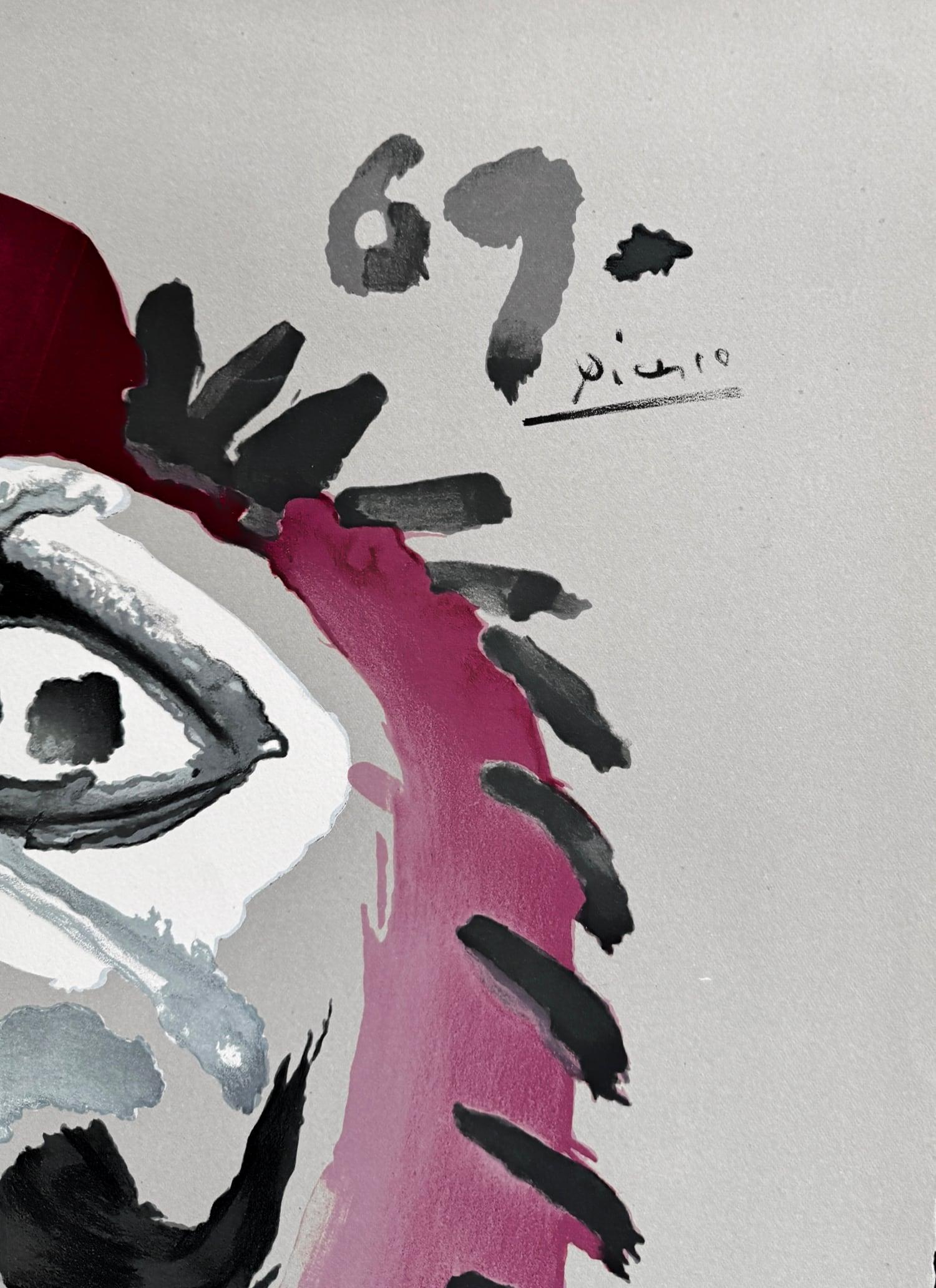after Pablo Picasso - Portraits Imaginaires 4.4.69
£ 0.00
Lithograph, 1969, by M. Salinas after P. Picasso. One plate from the portfolio Vingt-neuf Portraits imaginaires. Paris: Cercle’Art, 1970. The lithographs were executed by Marcel Salinas under Picasso’s commission to reproduce a series of imaginary portraits painted on packing cardboard in Mougins between February and May 1969
Printed by: Marcel Salinas in 1969
Publisher: Editions Cercle d’Art, Paris & Harry N Abrams, New York
Size: 65.5 x 50.5 cms
Edition: 250 - French Edition: There were 250 copies for the French edition, marked F and 250 for the American edition, marked A.
Note: At the beginning of 1969 Picasso was in Mougins, on the French Riviera. It was a tiring time for the great artist. He was having a series of exhibitions in Avignon, and was being ferociously attacked in some of the press. He had been quite ill, and recuperation was taking its time. And, at 88, old age was finally knocking strongly at his door. In Mougins he salvaged and recycled a set of cardboard sheets, some say from a consignment of art materials, others from the packing boxes of a new kitchen. The different textures and appearances of these sheets of carton appealed to him and he viewed the large panels of cardboard as canvases, so he set to work: from the 30th of January 1969 to the 7th of May, during one of his famous bursts of creative energy, he created a number of portraits on different sheets of card- board, all variants of XVIIth century musketeer-type of gentlemen (and two women, one in a Mantilla, the other naked). Each portrait was in gouache with simple and brilliant colours. They are all clearly linked together, each a transformation, or mutation, from the earlier one. As usual, Picasso did not title his works but the individual portraits can be identified with the date, appearing in the same style on them all, and, if more than one was produced in the same day, with a sequential number that he added in Roman numerals. The whole series became known as Portraits Imaginaires or Imaginary Portraits. The series was first exhibited at the Galerie du Dragon in Paris, belonging to his friend Zervos, and there a young publisher called Charles Feld saw them and conceived the idea of reproducing some of them in lithography. He submitted the idea to Picasso and, for the first time in his life, the artist consented to have 29 of the portraits reproduced in lithography. An important part of the stipulation was that the different types of cardboard were to be reproduced exactly. The artist chosen for the task was Marcel Salinas, and Picasso supervised the process throughout, authoring the printing only when completely satisfied. The printing was done at the Ateliers Dethuit and Guillard-Gourdon; the process took over a year and, upon completion, the plates were destroyed. This was going to be the last of the great cycles of Picasso lithographs. Each print is hand numbered and carries, in the plate, the signature of Picasso as it appears on the original gouache portraits. Two editions exist: “A” for the American Market and “F” for the French market
Literature: Orozo: Page 144 (Illustrated)
Category Pablo Picasso


